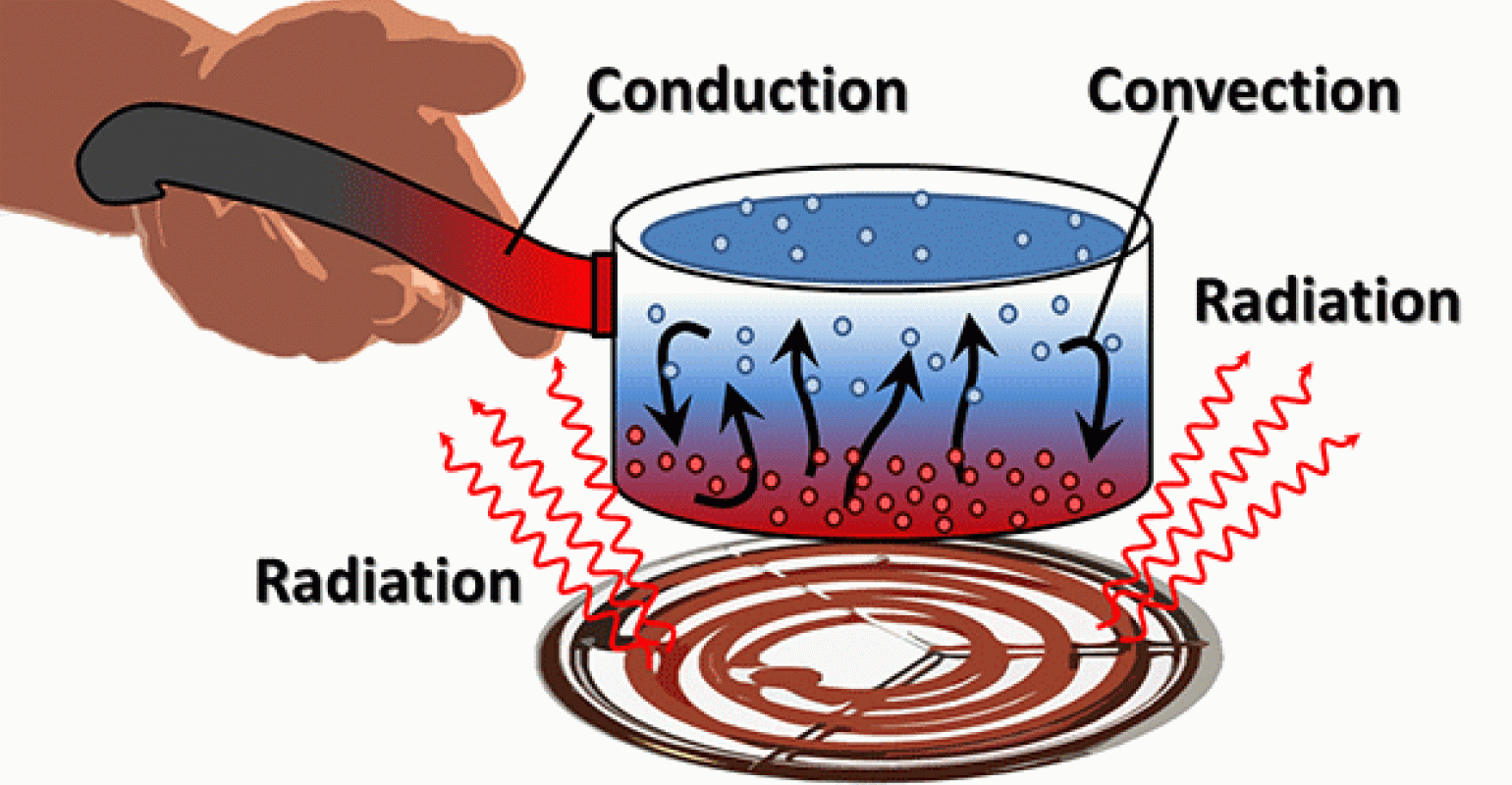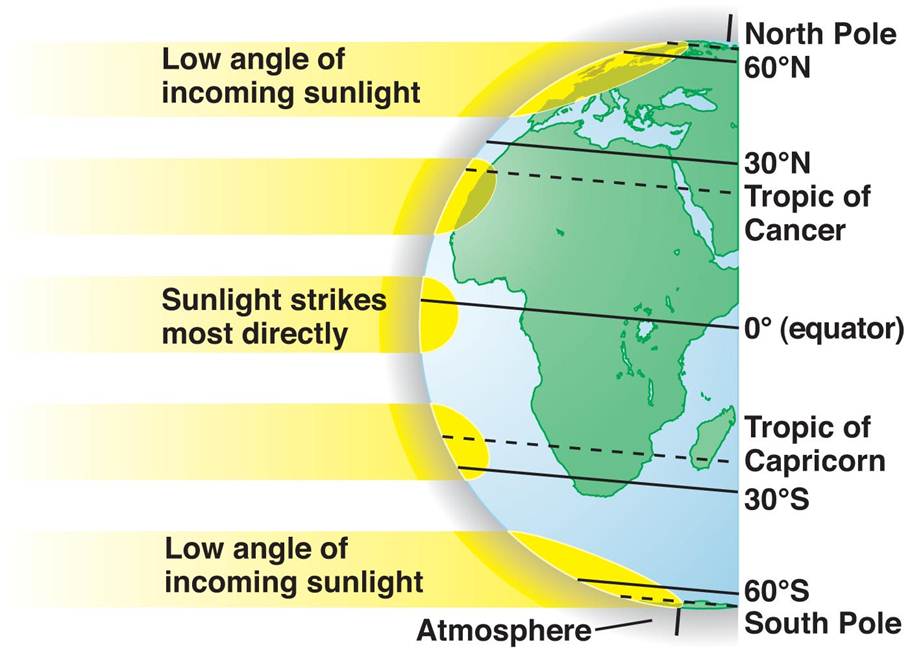Name and explain the processes by which water vapour enters the atmosphere;
Water vapour enters the atmosphere through two distinct processes
1) Evaporation – the reverse process to condensation – water changes naturally back into water vapour in the environment from puddles, lakes etc
2) Transpiration – moisture is carried through plants from roots to small pores on the leaves where it is released to the environment
Collectively the above are called Evapotranspiration all of which takes place from the surface of the earth (apart from evaporating clouds)
When water changes between its 3 states of ice, water and water vapour, the processes involved must include the uptake or release of latent heat.
Latent – generally means “hidden” – heat is the heat energy needed to convert ice to liquid, liquid to vapour and /or ice directly to vapour without a change in temperature
8.16.12 Describe each of the following processes with regard to the changes of state of water:
(a) condensation;
(b) evaporation;
(c) deposition;
(d) sublimation;
(e) melting;
(f) freezing.
a) Condensation is the change from water vapour to liquid
e.g. cloud or fog forms from this process
b) Evaporation is the change from water liquid to vapour
The ability of air to absorb water as a vapour depends on the temperature of the air;
the warmer the air the more vapour it can hold and the colder the air the less vapour it can hold
c) Deposition is the process of water vapour to ice, by-passing the liquid state
e.g. – seen on a frosty night when ice covers the car windshield
d) Sublimation is the by-passing of the liquid state, when ice melts into vapour
e.g. – ice changes directly to vapour
e) Melting is when ice changes into liquid water
f) Freezing is when liquid water changes into ice
g) Latent heat is in all changes of state, no matter which way latent heat is involved.
It is the energy required or given off to make the change – it does not affect the temperature of the substance that is changing, only that of the surrounding air or mass.
Describe the diurnal variation of surface air temperature and explain the effect of different types of surface on this variation.
Diurnal means “taking place in 24 hrs“
Because the sun shines for only half-ish of the day, the Earth’s surface can warm the air to any extent only during this time; thus a variation develops where temperatures are warmest during early afternoon after maximum solar energy has been received, and temperatures are coldest at the end of the night around dawn.
The degree of temperature variation depends on the type of earth surface as well as albedo, cloud, sun angle and presence of wind.
Define albedo.
Albedo means “whiteness”
It is used to describe the ability of a given surface to reject incoming solar radiation
For example; snow fields have a high albedo, therefore are capable of almost total rejection

Describe the process of:
a) Conduction;
b) Convection
c) Advection
a) The Earth’s surface warms air particles in touch with the surface through conduction
b) When air particles have been warmed they expand, mix and rise and through convection, warming higher layers of air
c) Advection is horizontal heat transfer by wind eg – warm airflow from the tropics

Describe the effect of latitude on the distribution of incoming solar radiation.
Latitude has the effect of allowing more or less solar radiation to reach the Earth’s surface; the closer the location is to the Equator, the more radiation is allowed to pass through the atmosphere to the Earth’s surface.
This is due to the sun being directly over the Earth’s surface, and not having to travel as far or pass through as much ozone.

Explain the effect of solar and terrestrial radiation on the air temperature.
Long wave radiation and solar radiation that is emitted by the Earth back into the atmosphere. Most of it is absorbed by the water vapor in the atmosphere, which in turn raises the ambient temperature.
The warm earth’s surface warms air particles in touch with the surface through conduction
The warmed air particles rise and through convection they warm higher layers of air
The atmosphere is warmed mainly from below and generally air temperature decreases with a gain in height
Describe the elements that influence the escape of terrestrial radiation.
The following elements influence the escape of terrestrial radiation:
water vapour
water droplets
carbon dioxide
man made pollutants
Explain what is meant by terrestrial radiation.
Terrestrial radiation is the long-wave radiation that is emitted by the earth back into the atmosphere. Most of it is absorbed by the water vapor in the atmosphere




